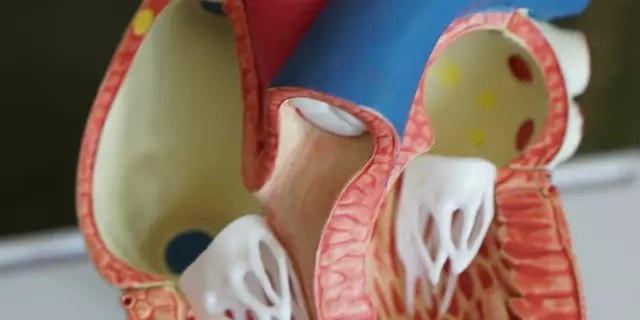5 Tips for Reducing Your Risk of Cardiac Arrest
1. Get Regular Check-Ups: Regular check-ups are critical to help detect any potential health issues that could increase your risk of cardiac arrest. Make sure to schedule regular appointments with your doctor to discuss your health and any potential concerns.2. Maintain a Healthy Diet: Eating a balanced, healthy diet is essential for reducing your risk of cardiac arrest. Focus on eating a variety of fruits, vegetables, lean proteins, and whole grains. Avoid processed foods and limit your intake of sodium, saturated fats, and refined sugars.
3. Get Regular Exercise: Exercise can help to improve your overall heart health and reduce your risk of cardiac arrest. Aim for at least 30 minutes of moderate physical activity per day.
4. Quit Smoking: Smoking has been linked to an increased risk of cardiac arrest. If you are a smoker, make it a priority to quit as soon as possible.
5. Know Your Family History: Knowing your family’s medical history can be helpful in understanding your own risk of cardiac arrest. Speak with your doctor about any potential risks and ways you can reduce them.
Dietary Changes to Help Prevent Cardiac Arrest
Cardiac arrest is a serious condition that can happen to anyone, regardless of age or gender. Taking the right steps to prevent it can be life-saving. Making simple dietary changes can help lower your risk of developing cardiac arrest.One way to lower your risk of cardiac arrest is to make sure your diet is rich in fruits, vegetables, and whole grains. Eating foods that are high in fiber can help reduce your risk of developing heart disease, and of having a cardiac arrest. Eating a diet full of fresh fruits and vegetables can also help provide the necessary vitamins and minerals to keep your heart healthy.
Another dietary change that can help prevent cardiac arrest is reducing the amount of saturated fat and cholesterol in your diet. Saturated fats and cholesterol can increase the risk of developing heart disease, so it’s important to limit the amount of these in your diet. Opt for lean cuts of meat and opt for low-fat dairy products when you can.
Finally, try to reduce the amount of sodium in your diet. Too much sodium can lead to high blood pressure, which can increase your risk of having a cardiac arrest. When cooking, try to reduce the amount of added salt you use and opt for fresh herbs and spices instead.
Making dietary changes is a great way to reduce your risk of developing cardiac arrest. Eating a heart-healthy diet can help keep your heart in good condition, and help prevent cardiac arrest.
Exercising to Prevent Cardiac Arrest
Regular physical activity is essential for maintaining a healthy heart and preventing cardiac arrest. Exercise helps improve your overall cardiovascular health by strengthening your heart muscle, lowering your blood pressure, and improving your cholesterol levels. Additionally, regular physical activity helps to keep your weight in check, which is another key factor for preventing cardiac arrest.There is no one-size-fits-all exercise plan that works for everyone; however, the American Heart Association recommends adults should aim for at least 150 minutes of moderate-intensity aerobic activity every week. This could include walking, jogging, swimming, biking, or any other activity that gets your heart rate up. Additionally, the American Heart Association recommends adults should also include at least two days of strength training in their weekly routine. Strength training helps to build muscle, which can help the body to burn more calories, even when you’re not actively exercising.
In addition to these recommended guidelines, it’s important to find an exercise routine that you enjoy and can stick with. If you’re new to exercise, start slowly and gradually increase the intensity and duration of your workouts over time. It’s also a good idea to check in with your doctor before starting any new exercise routine to make sure it’s safe for you.
The Benefits of Cardiac Rehabilitation for Cardiac Arrest Prevention
Cardiac arrest is a leading cause of death, but one of the best ways to prevent it is through cardiac rehabilitation. Cardiac rehabilitation is a comprehensive program of exercise, education, and lifestyle counseling to help heart patients recover, reduce their risk of future cardiac events, and improve their overall quality of life.Cardiac rehabilitation can help reduce the risk of cardiac arrest in several ways. First, it can help reduce risk factors associated with the condition, such as high blood pressure, high cholesterol, and diabetes. Exercise programs can improve overall fitness and reduce the risk of heart attack, stroke, and other cardiac events.
Second, cardiac rehabilitation can help to teach lifestyle changes, such as quitting smoking, reducing stress, and making healthy food choices. These lifestyle changes can all help reduce the risk of cardiac arrest.
Finally, cardiac rehabilitation can provide education about the warning signs of cardiac arrest and how to respond. Learning the warning signs of cardiac arrest and how to respond can help save lives and prevent cardiac arrest.
Cardiac rehabilitation can be an important part of preventing cardiac arrest, as well as helping heart patients recover and improve their overall quality of life. It is important to consult with your healthcare provider to determine if cardiac rehabilitation is right for you.













Write a comment